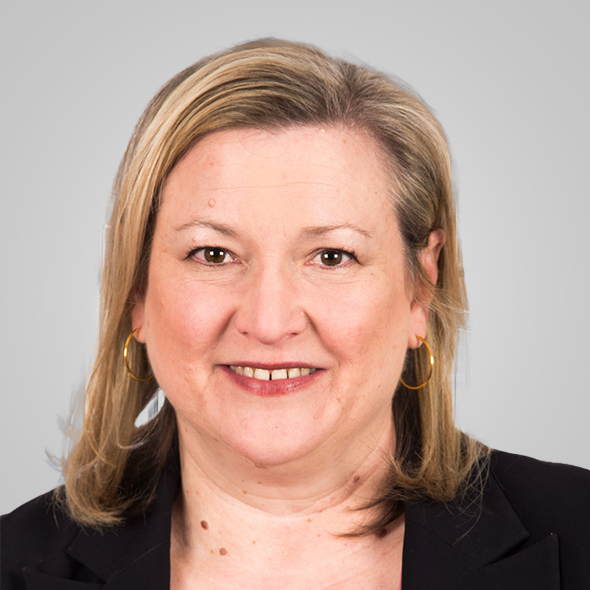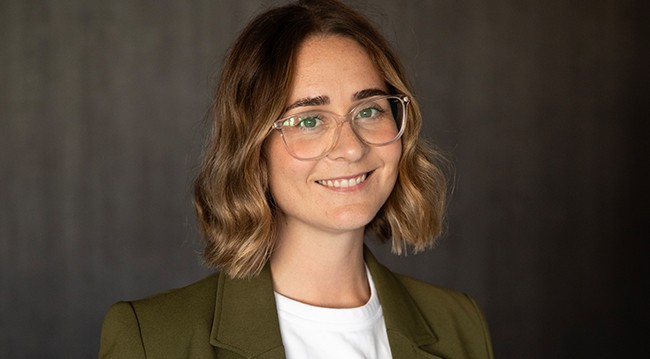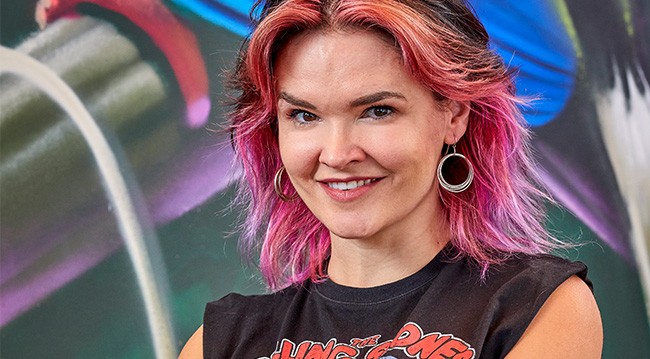The importance of challenging stereotypes, cultivating confidence and getting comfortable with being uncomfortable are the common threads that unite the experiences of the next generation of female directors.
Natalie Ajay GAICD
Some of the best outcomes in the boardroom start with a “sticky problem”, says Natalie Ajay GAICD.
Three years into her board career, which currently includes positions with Alpine Resorts Victoria and Murray Regional Tourism, Natalie Ajay GAICD says challenging deeply embedded legacy ways of doing business can lead to perspective-changing shifts — and often the person best placed to ask the right questions is a fresh face.
“Being someone who was relatively inexperienced meant that I was often the one asking what some other people on the board might consider an obvious question,” says Ajay. “But I’ve seen this open up a dialogue that prompts others to say, ‘Actually, maybe we do need to ask that question, because we haven’t asked it for a really long time’.”
For instance, when dealing with fire- and flood-affected communities, it could be tempting to try to “fix things” by moving from point A to point B quickly. Yet Ajay’s executive experience — which spans communications, marketing, stakeholder engagement and business development — taught her it was vital to engage industry and the community. “It’s important that they don’t feel like things are happening to them, but they’re helping to define what the journey and the outcomes look like for their community,” she says.
Ajay found herself having to switch gears upon entering the boardroom — from having the answers to understanding how to ask the right questions. “In a corporate role, you’re expected to know everything and be a subject-matter expert. That’s why you’re there,” she says. “You’re never going to come into a boardroom knowing everything about the organisation, or about the systems or issues at the time, and I had to learn to be OK with that discomfort. There are still times where I find myself… diving back into executive mindset and having to pull back and go, ‘Actually, that’s not your problem to solve. There’s a big issue here that needs to be interrogated further’.”
While younger female board members could bring new ways of looking at an issue, Ajay urges those intent on a board career to be “open and ready for constructive feedback” from their more experienced peers. She says appointing inexperienced board members could bring benefits, even though it might be perceived as risky. “Chucking a cat among the pigeons may well create equal parts chaos and benefit… a lot of organisations would do well to have a firework thrown in there,” she says.
Kate O’Keeffe GAICD
As CEO and co-founder of start-up Heatseeker, and a former Boston Consulting and Cisco executive, Kate O’Keeffe GAICD says she’s always had an appetite for good governance. So when she was approached to take on a board position with Birchal, an Australian equity crowdfunding platform, she says it seemed like the “perfect match”.
“I bring some really interesting technology muscles to the Australian ecosystem and supporting a CEO here in Australia with those muscles was really exciting to me,” she says.
But before stepping onto the board, she did her due diligence. “The CEO and I spent time one-on-one before I took the role, and I wouldn’t have taken it if I didn’t think he and I were going to be excellent working partners,” she says.
There were two or three meetings, a dinner with the entire board and then O’Keeffe ran a three-hour workshop on the Voice of the Customer. This gave her lots of opportunities to watch the dynamic of the board in real time. She could see they valued her skills, were curious about what she had to offer and had compatible communication styles.
“We could be frank and fearless, dropping the odd F-bomb and no-one was clutching their pearls,” says O’Keeffe.
Previously, O’Keeffe had enjoyed someone’s company over dinner, but then not enjoyed the experience of working with them. “I needed to get under the hood, to know if I was going to enjoy working with them,” she says.
O’Keeffe is adamant that corporate Australia needs more women on boards. “Not only do we need more women on boards, but we need more women who’ve had the experience of being on boards,” she says. “It gives you a really rich perspective in terms of your leadership, trajectory and development.”
But a certain level of psychological safety is critical, so women felt comfortable during disagreements and robust discussions.
She adds that more is usually expected of women than it is for men. “The hurdle rates as to what qualifies them to sit on a board tend to be higher (and) the amount of hoops we get them to jump through is higher. Those of us who are lucky enough to be in a position to be making appointments should think very deeply about who’s getting the benefit of our doubt and making sure that we’re applying that at least equally.”
Helen Conway FAICD
In the early stages of her board career, this director became used to butting heads with some of her male colleagues
When Helen Conway FAICD started her board career, she got used to mostly male directors “reacting in a way which wasn’t particularly endorsing of my presence”.
Typically, this response was triggered by the questions she asked.
“On one occasion, I said, ‘We say we’re a customer-focused organisation, but we never see any customer data at this board. How are we servicing our customers? What feedback are they giving?’ Some of the blokes looked at me askance.”
But after the board meeting, two executives present thanked Conway, a former law firm partner who is president of YWCA Australia and chair of Australian Business Volunteers. They explained she’d highlighted an important area that, much to their frustration, had gone unacknowledged and unaddressed.
“That was a pivotal moment for me,” she says. “That gave me the confidence I wasn’t off the mark, that in reading the board papers, I was able to pick key issues and that in asking the questions, I was adding some value. Following that meeting, we started to get regular customer information and the focus of the board, supporting management’s efforts on this issue, improved the organisation’s customer performance.”
Knowing that courage and curiosity go hand in hand with confidence is one reason Conway takes a proactive role in supporting young women participating in YWCA Australia’s governance. “Under the Y’s Constitution, we have to have 30 per cent of the board aged 30 years or younger, and we also appoint two board trainees per year,” she explains.
She takes a “measured and gentle approach” to ensuring the YWCA young directors and board trainees understand and adhere to the established norms and practices of the boardroom, while developing their own unique leadership styles. Role modelling by the chair is “incredibly important” to setting the dynamic in the boardroom.
Conway advises the young women at the Y to build a good base of executive experience before moving into board roles and then “listening a lot” to fully understand the business when they are first appointed to a board. “How you ask questions is also really important,” she says. “I’ve seen people ask questions in a very accusatory way, which puts staff and executives off.”
Conway suggests that increasing diversity by putting more women in board positions is just the start. “Just having the people around the table doesn’t help if you’re not fully utilising the perspectives and the experiences they bring,” she says.
#CountHerIn #IWD2024
Latest news
Already a member?
Login to view this content





